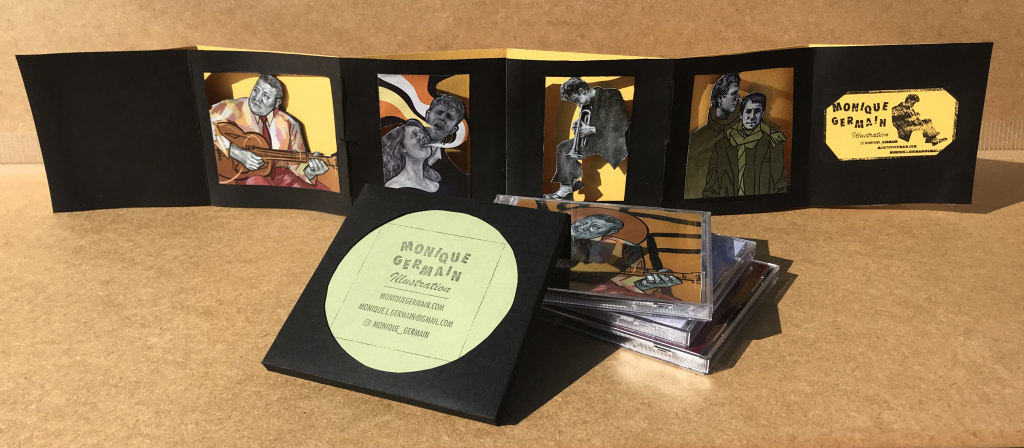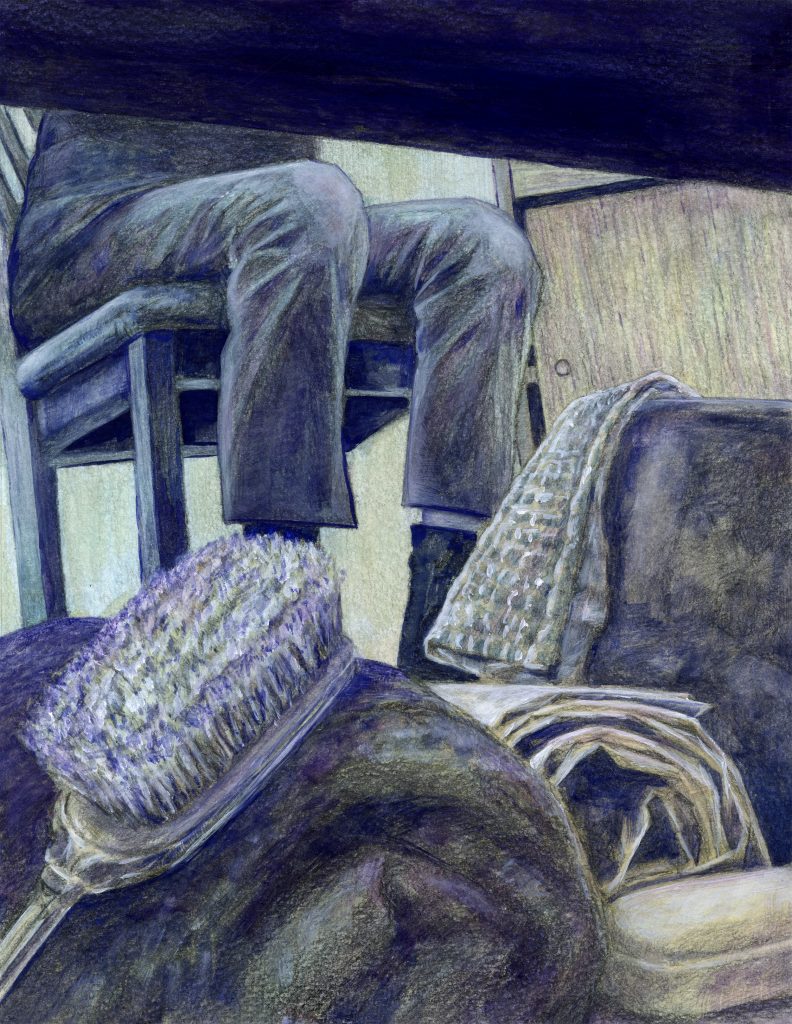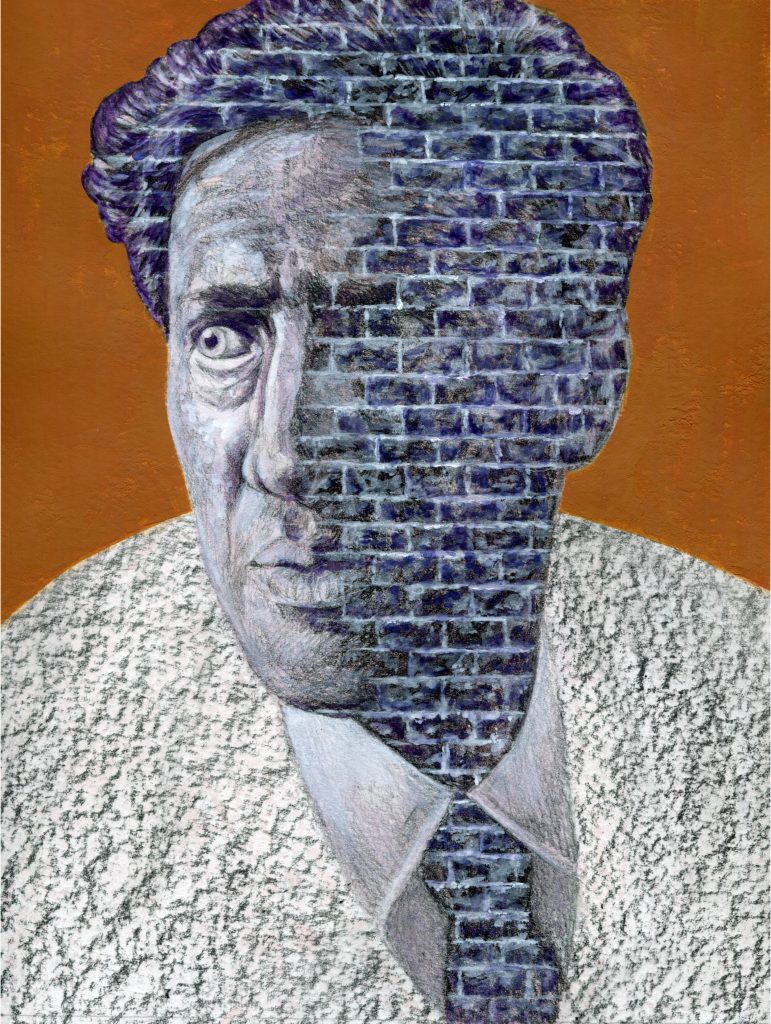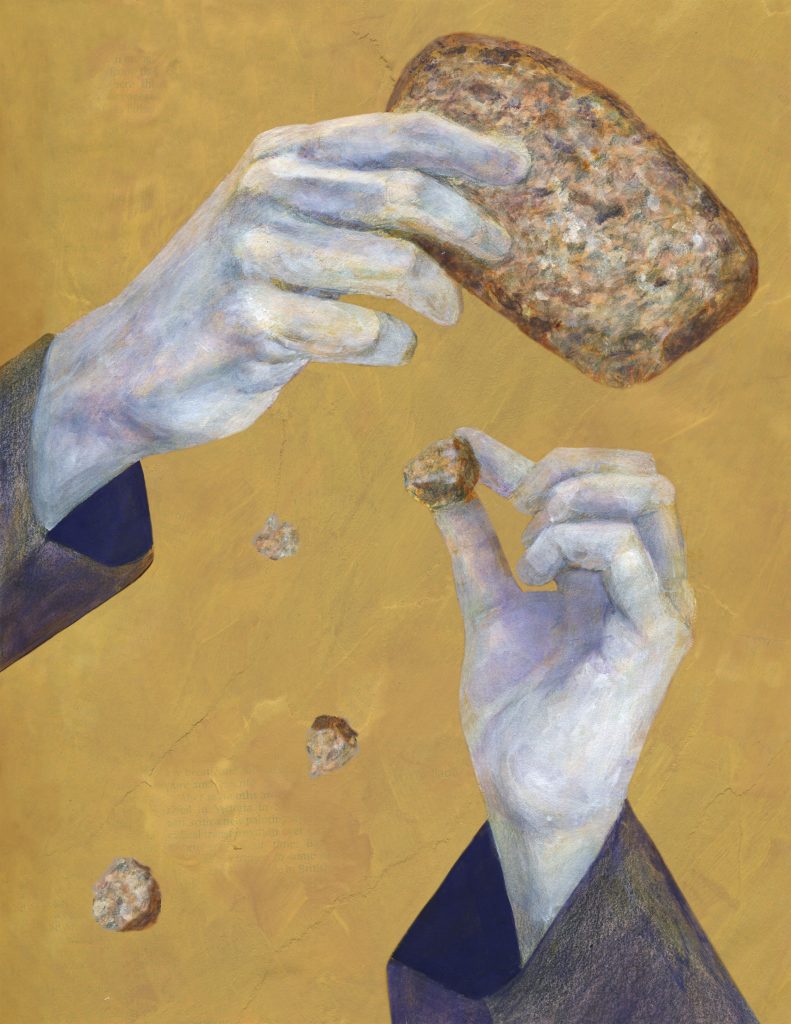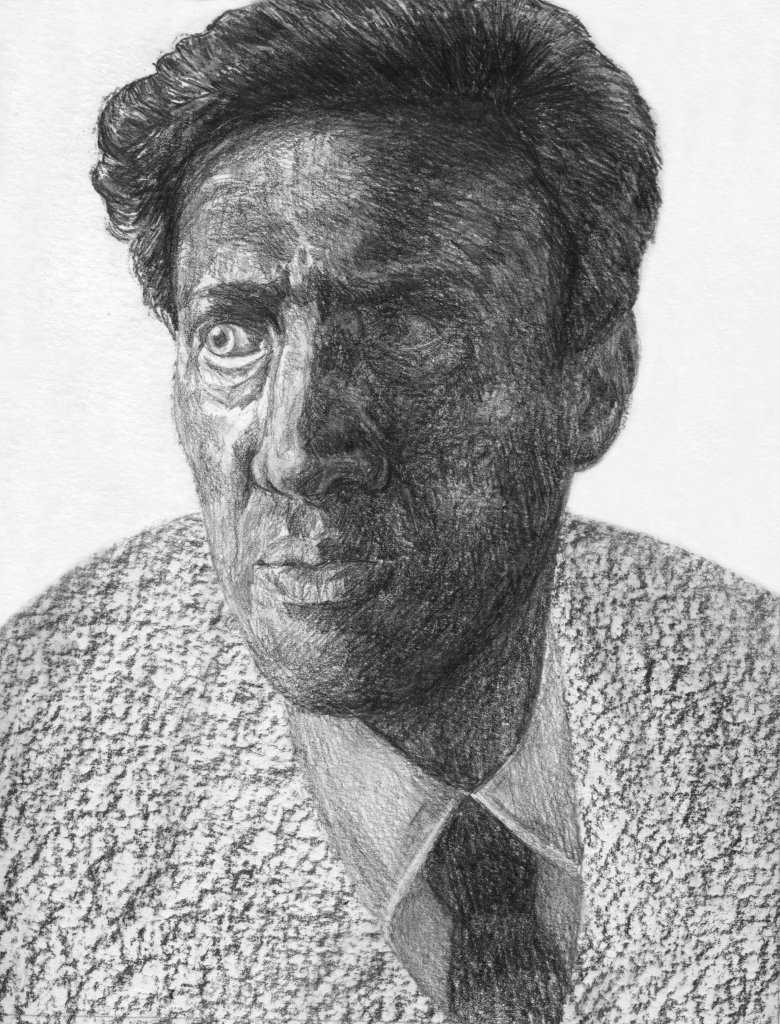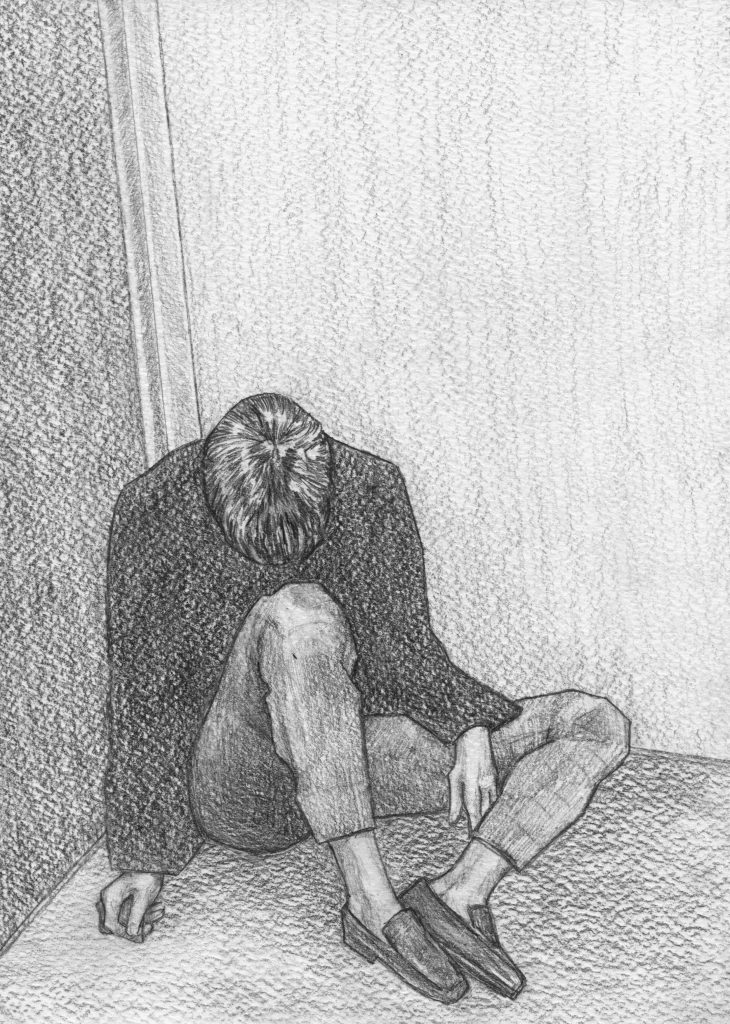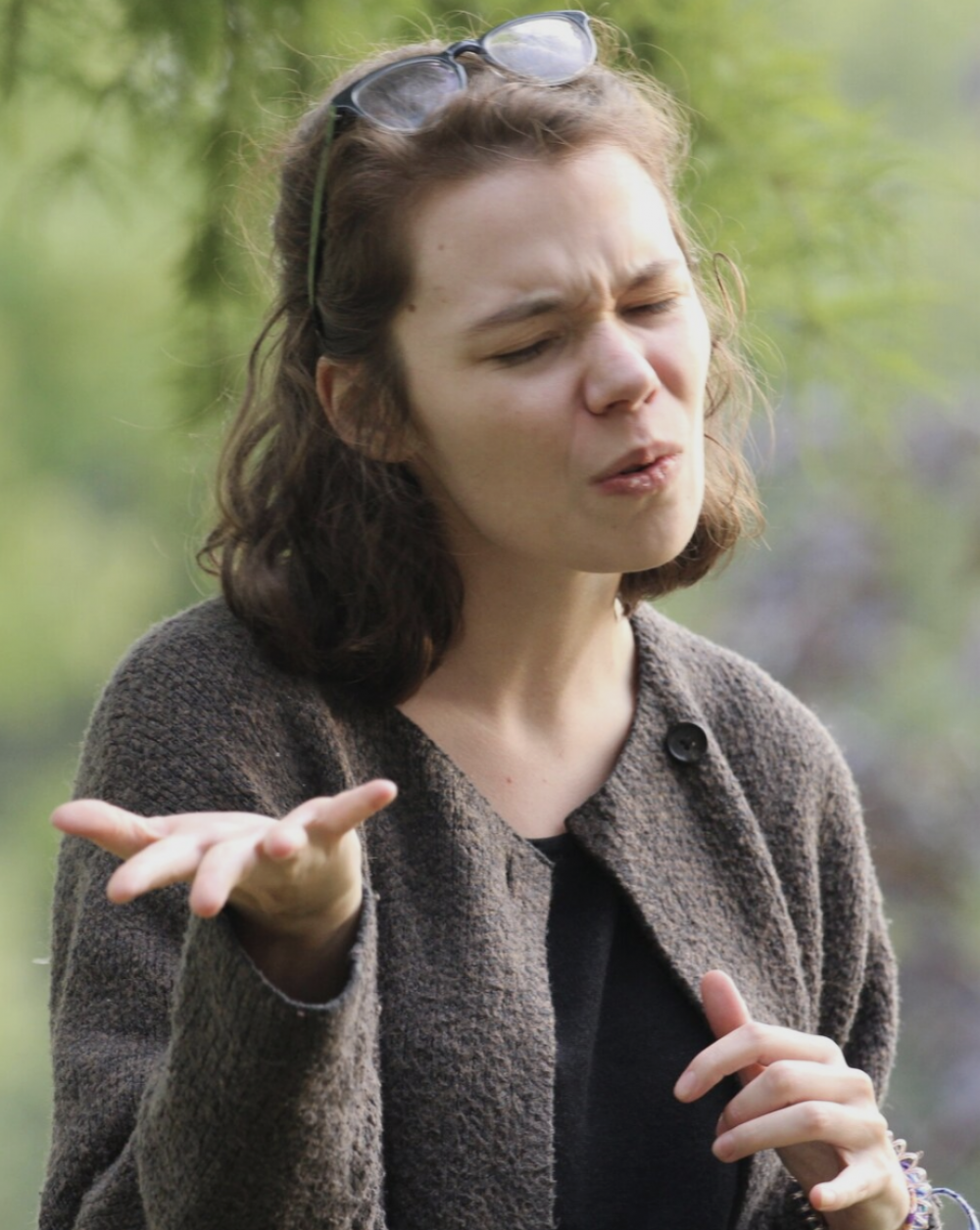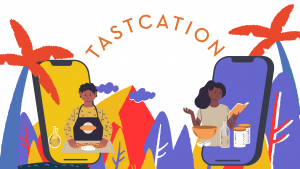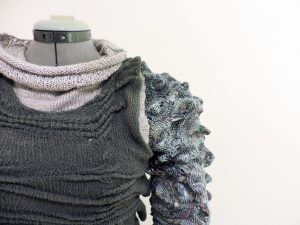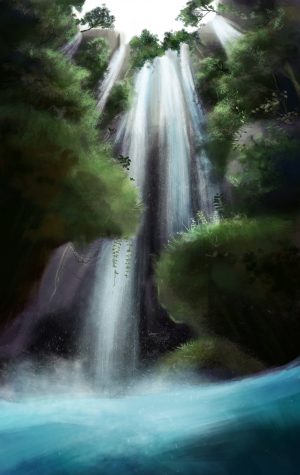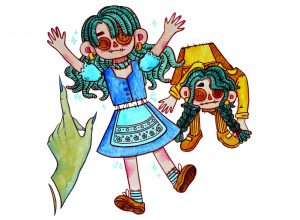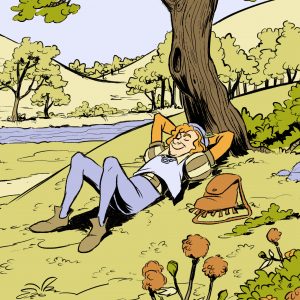Beats, Bartleby, and the Bard
Monique Germain
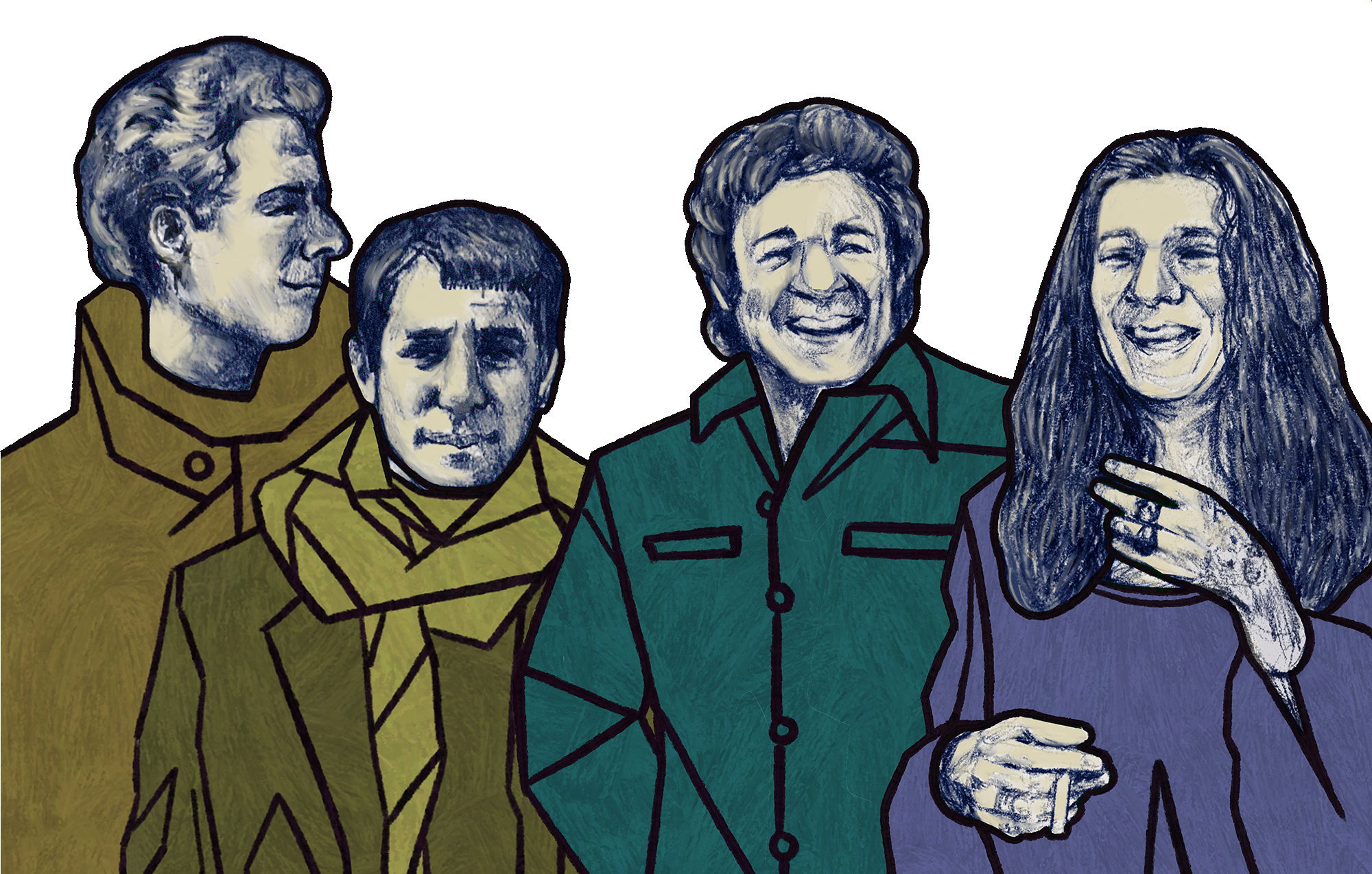
Introduction
Welcome! Here you’ll find a collection of editorial illustrations of the stories and people who’ve inspired me this year. I have a mixed media illustration practice, working primarily with acrylic paint, charcoal, digital paint, gouache, and graphite to create my work. I’ve grabbed a selection of illustrations to share with you, divided into three themed categories:
Bartleby the Scrivener
A selection of full-spread painted illustrations done for the 1853 short story “Bartleby, the Scrivener: A Story of Wall Street” by Herman Melville. These are acrylic, gouache and graphite illustrations, each measuring 8.5″ x 11″.
Hamlet
A series of full-spread, half-spread and spot illustrations made for William Shakespeare’s play Hamlet. These illustrations are a mix of charcoal, graphite, and digital paint.
Music
These are pieces celebrating the musicians who’ve kept me company throughout my degree, primarily made of charcoal, graphite and digital paint. They’re exhibited in a handmade double-accordion book, made to resemble a CD case.
If one’s of particular interest, the below links should jump you directly to its section. Otherwise, please enjoy the scroll!
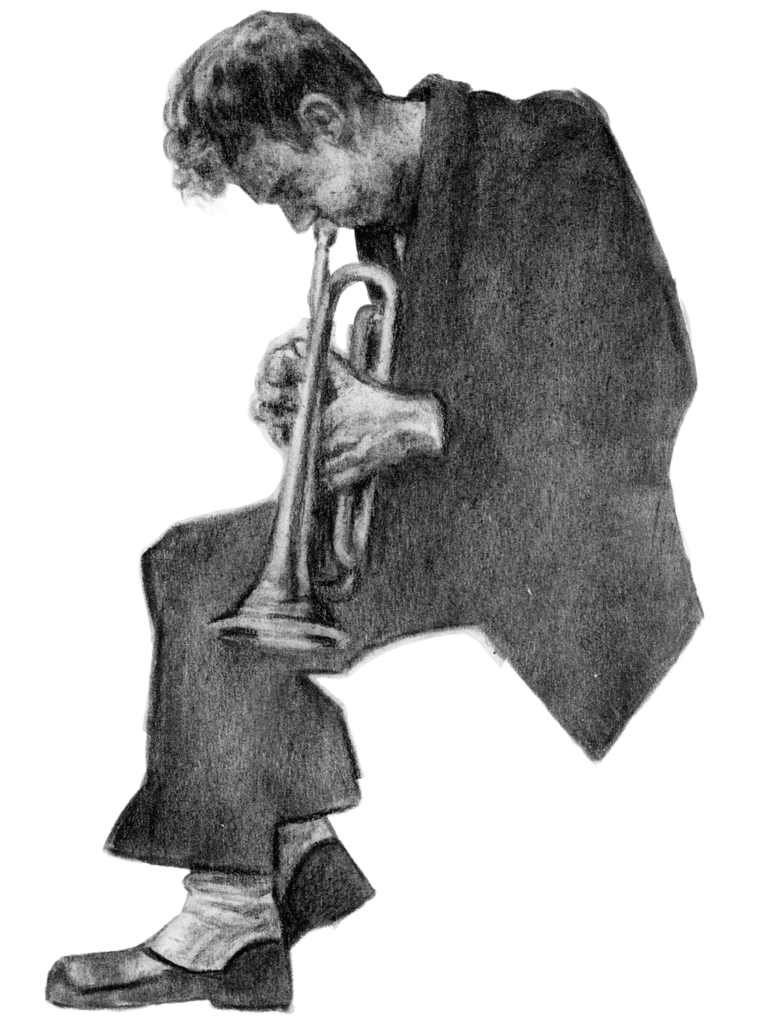
JUMP TO:
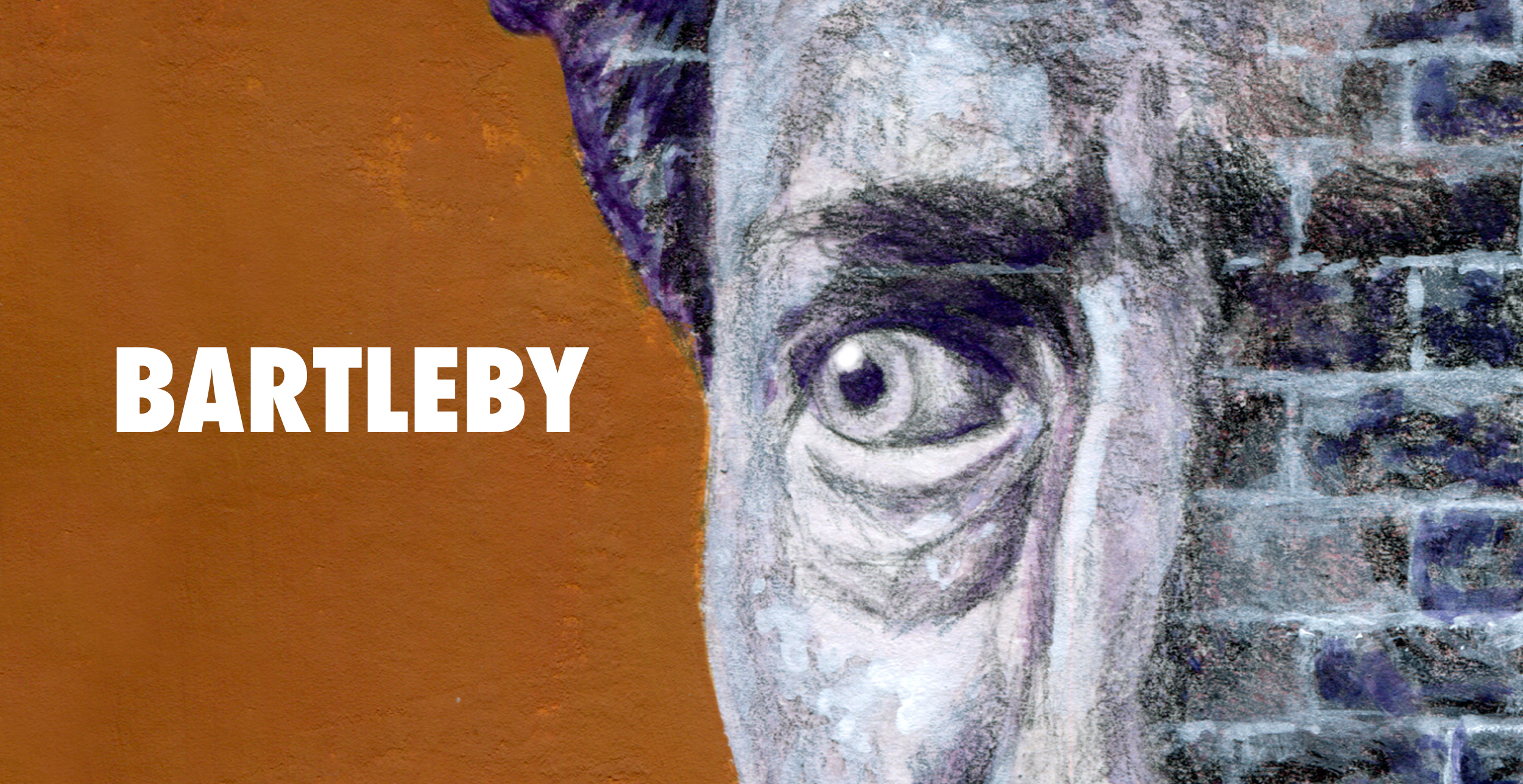
“Ah BARTLEBY! Ah Humanity!”
This is a series of editorial illustrations made for Herman Melville’s 1853 short story, “Bartleby, the Scrivener: A Story of Wallstreet”. The story details the frustration of life as a creative, the effects of failing mental health, and is a rejection of the idea that output is an indication of worth. Each illustration measures 8.5″ x 11″, and was made using a mixture of graphite, gouache, and white acrylic paint.
In the story, Bartleby is a worker who begins to politely- but firmly- refuse every task handed to him. Once fired, he opts not to leave his workplace. Once jailed, he opts not to eat. While these choices grant him freedom, his unwillingness to produce or consume leads to a tragic end.
This year, whenever Zoom calls wore me down, whenever I looked at a pile of work and thought I’d ‘prefer not to’- I thought about Bartleby, and found the energy to draw once more. Bartleby would sit for hours at his desk, staring at the wall- drawing him kept me from doing the same!
AT A GLANCE
A CLOSER LOOK
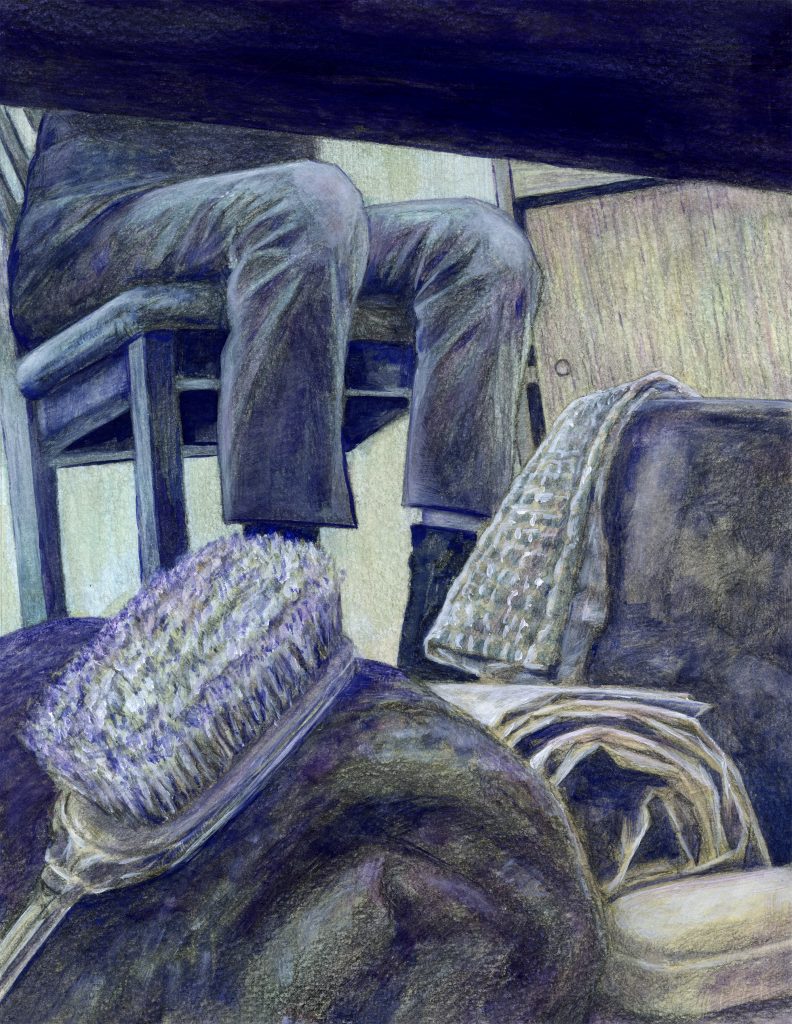
Bartleby the Scrivener
Graphite, Gouache, Acrylic – 8.5″ x 11″ – 2021
“Rolled away under his desk, I found a blanket; under the empty grate, a blacking box and brush; on a chair, a tin basin, with soap and a ragged towel; in a newspaper a few crumbs of ginger-nuts and a morsel of cheese. Yes, thought I, it is evident enough that Bartleby has been making his home here, keeping bachelor’s hall all by himself.”
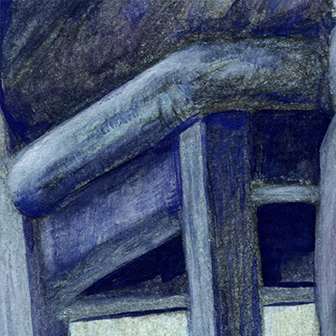
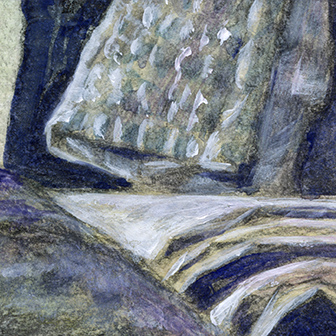
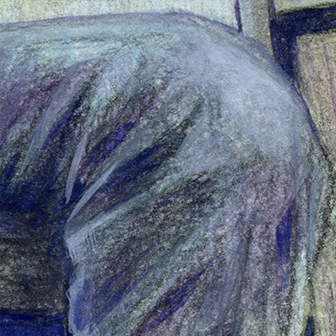
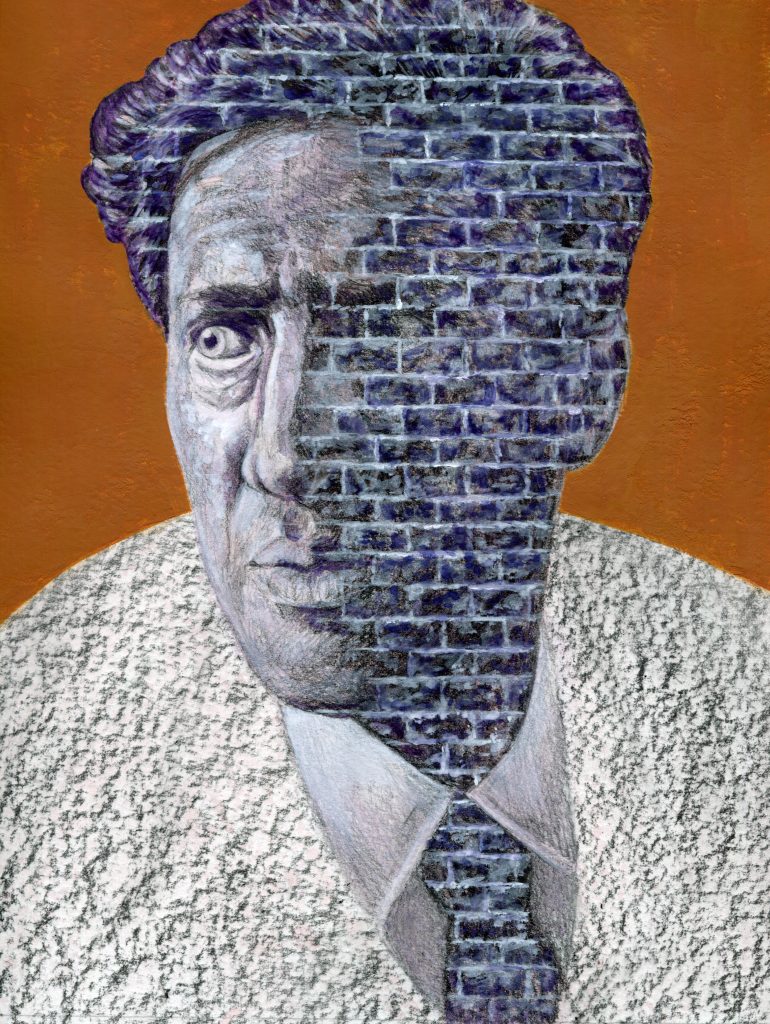
I Would Prefer Not To
Graphite, Gouache, Acrylic – 8.5″ x 11″ – 2021
“I had never seen him reading—no, not even a newspaper; that for long periods he would stand looking out, at his pale window behind the screen, upon the dead brick wall”

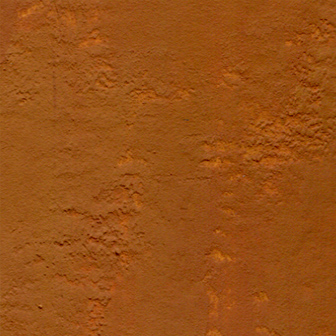
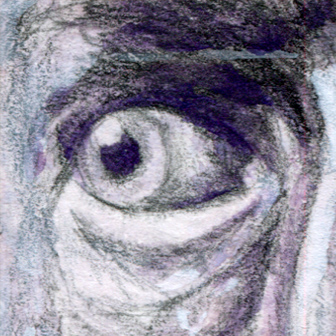
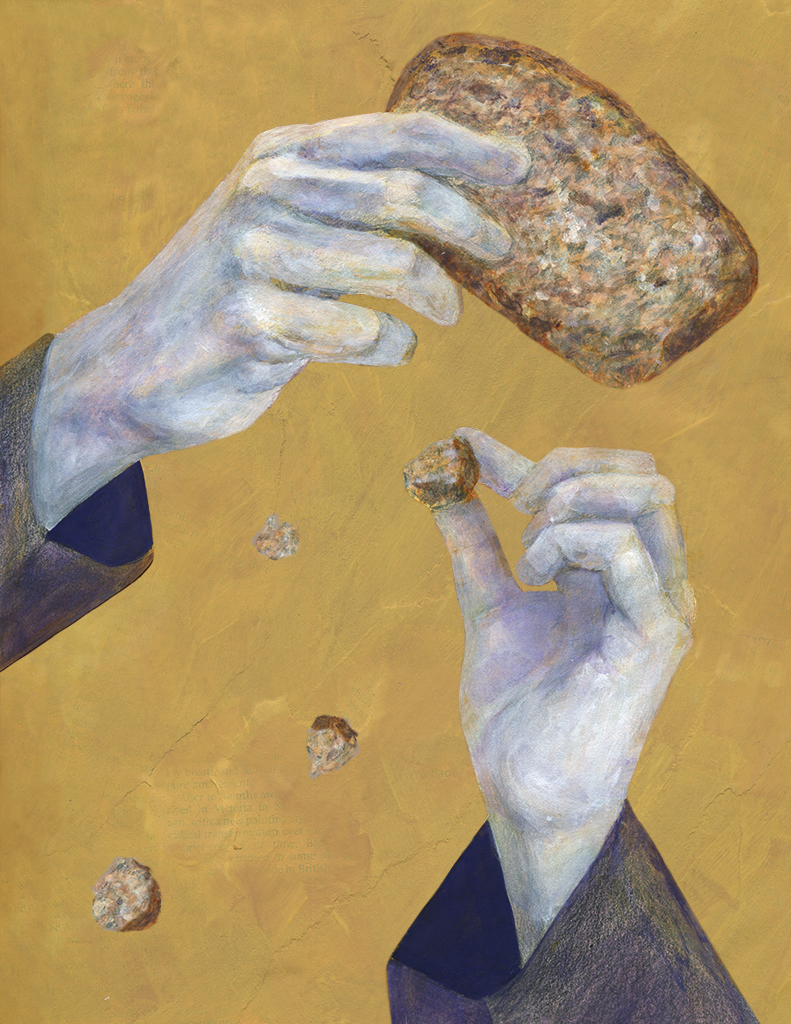
Ginger Loaf
Graphite, Gouache, Acrylic – 8.5″ x 11″ – 2021
“Ginger-nuts are so called because they contain ginger as one of their peculiar constituents, and the final flavoring one. Now what was ginger? A hot, spicy thing. Was Bartleby hot and spicy? Not at all. Ginger, then, had no effect upon Bartleby. Probably he preferred it should have none.“
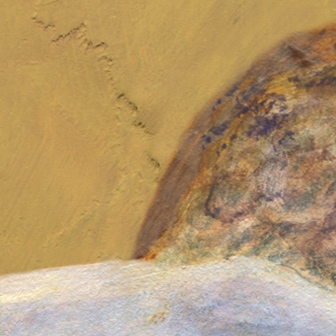
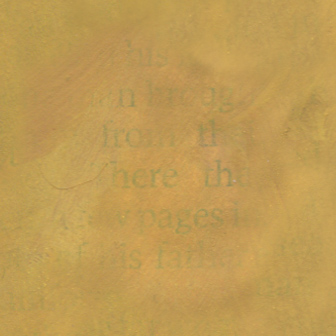
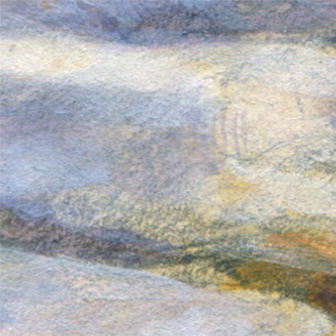
A GLIMPSE INTO THE PROCESS
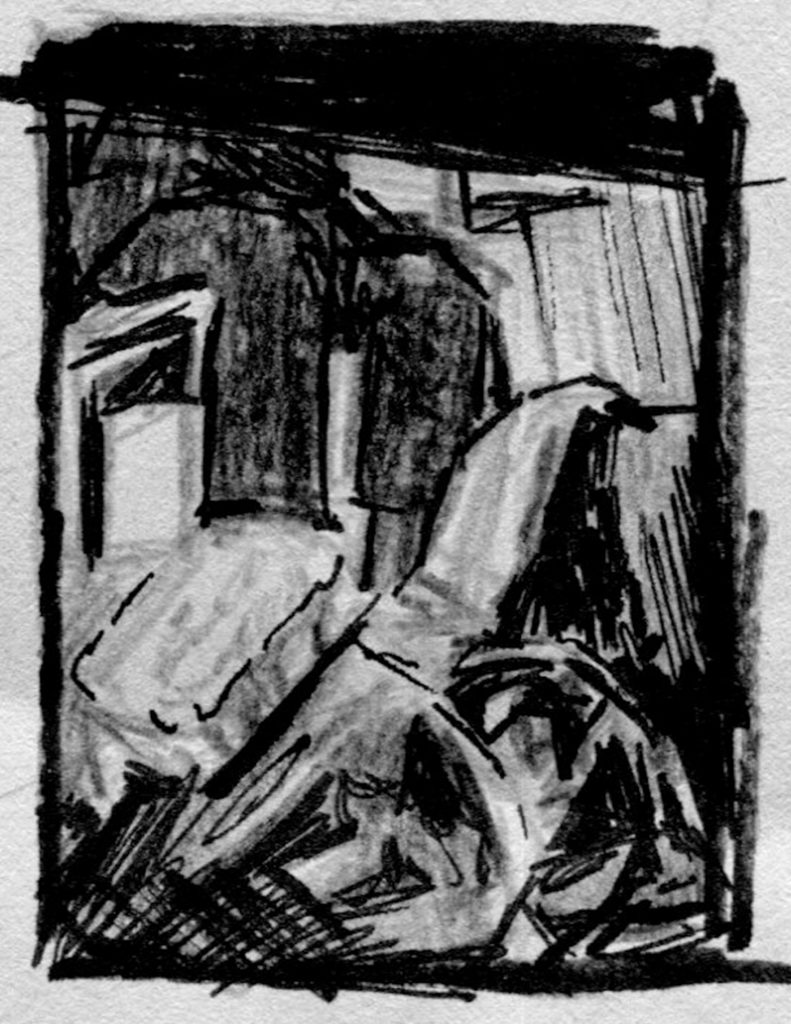
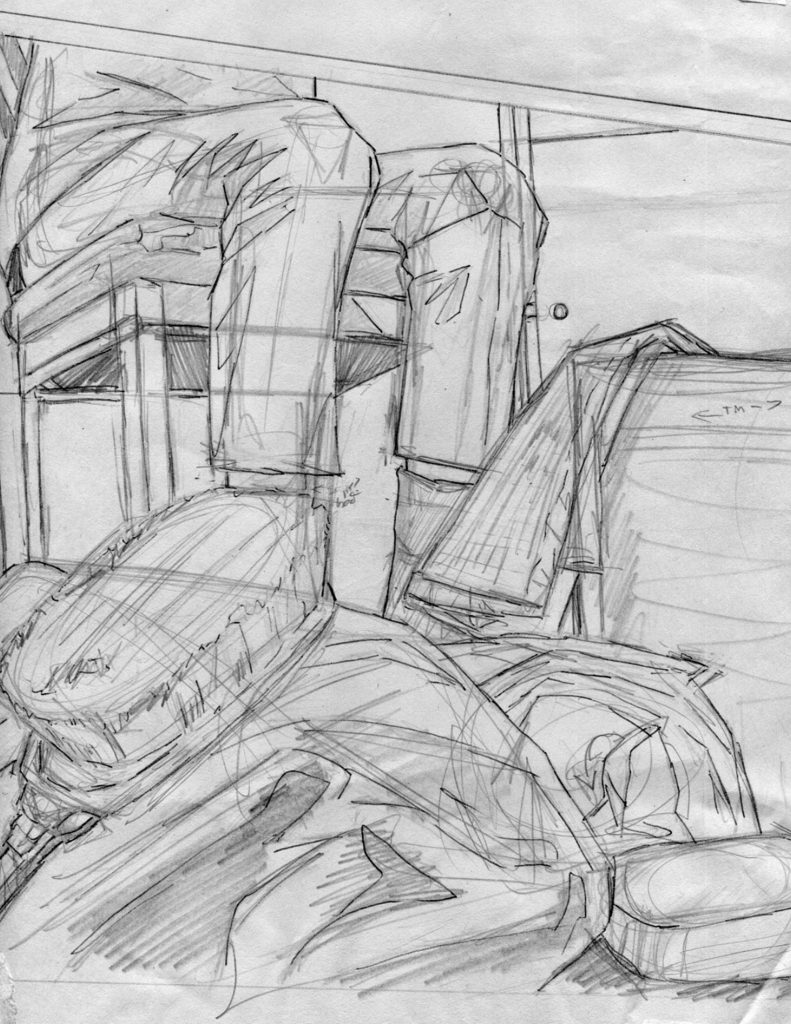
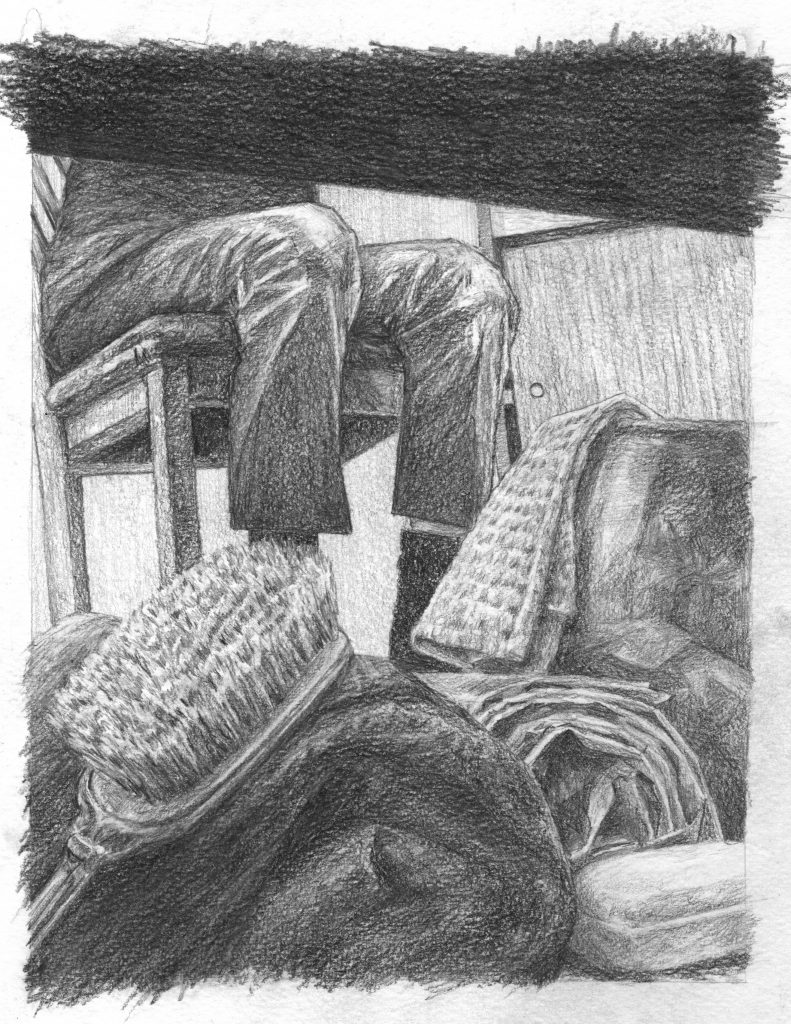
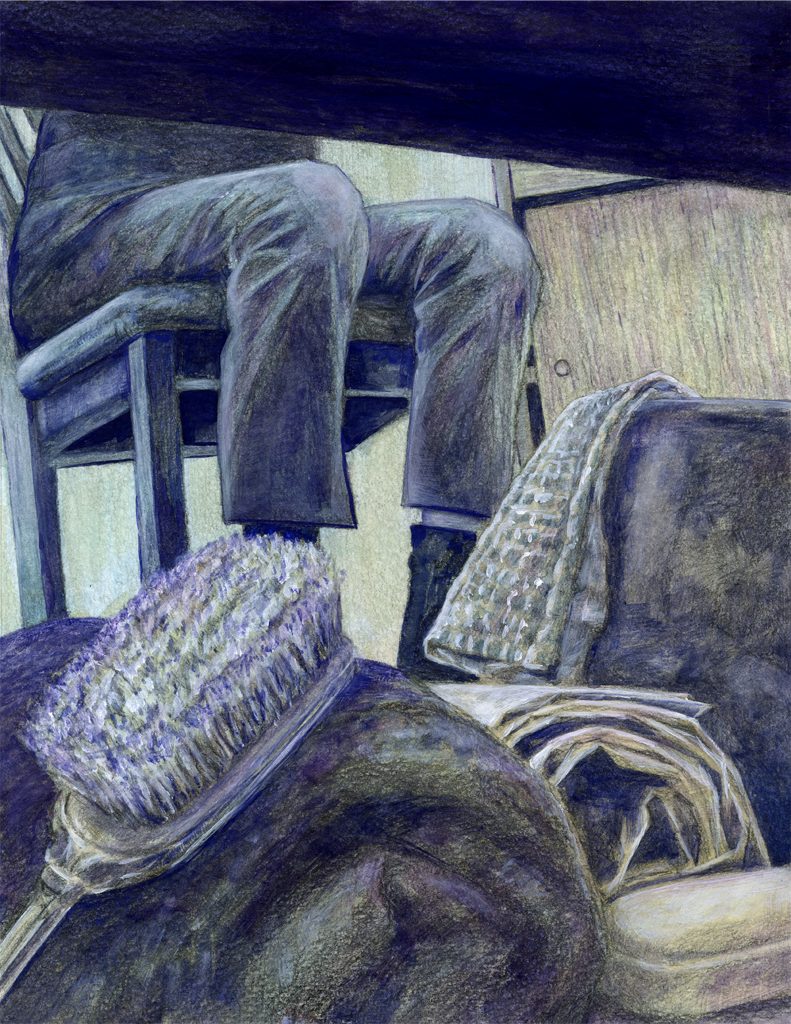
I seized this series as a chance to experiment with materials, learning to incorporate acrylic, gouache, and collage within my graphite practice. “Ginger Loaf” in particular was fun- as Bartleby kept his scraps of food wrapped in newspaper, a newspaper collage became an interesting textural base for the illustration.
PROCESS: Each drawing began with the original story text and pages of thumbnails exploring possible interpretations. Once a promising thumbnail was selected, I redrew this in graphite as an 8.5″ x 11″ sketch on rough newsprint, finding the right lines and rough values. Once happy, the back of this paper was scrubbed with charcoal and all the best lines transferred to a sheet of watercolour paper. Using my sketch lines as a guide, I then used graphite to draw a black and white version of the final illustration. This is where experimentation came in- alternating between washes of gouache and white acrylic paint to add colour to each piece. The water in the acrylic interacted with every wash of gouache before it, mixing the colours on canvas and fixing the gouache layers permanently.
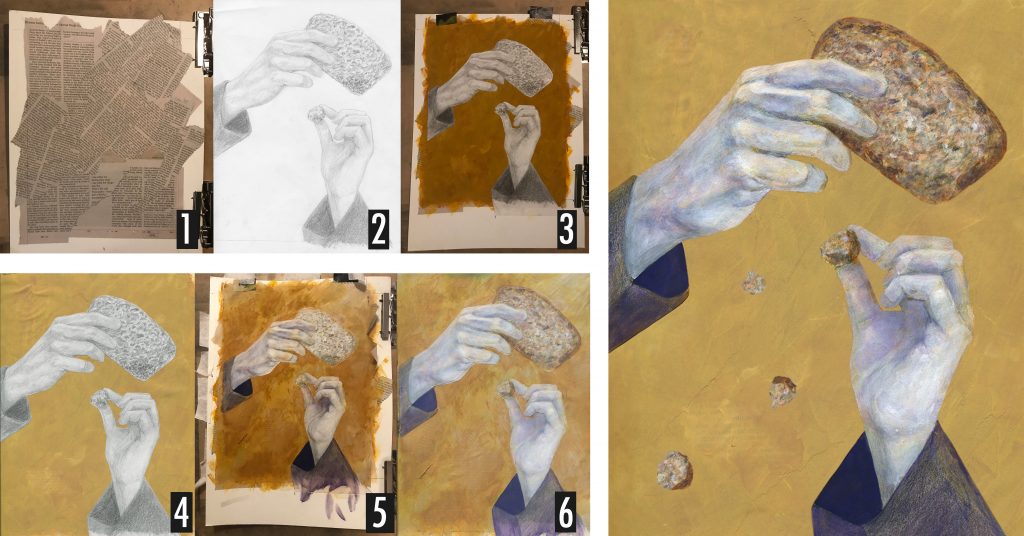
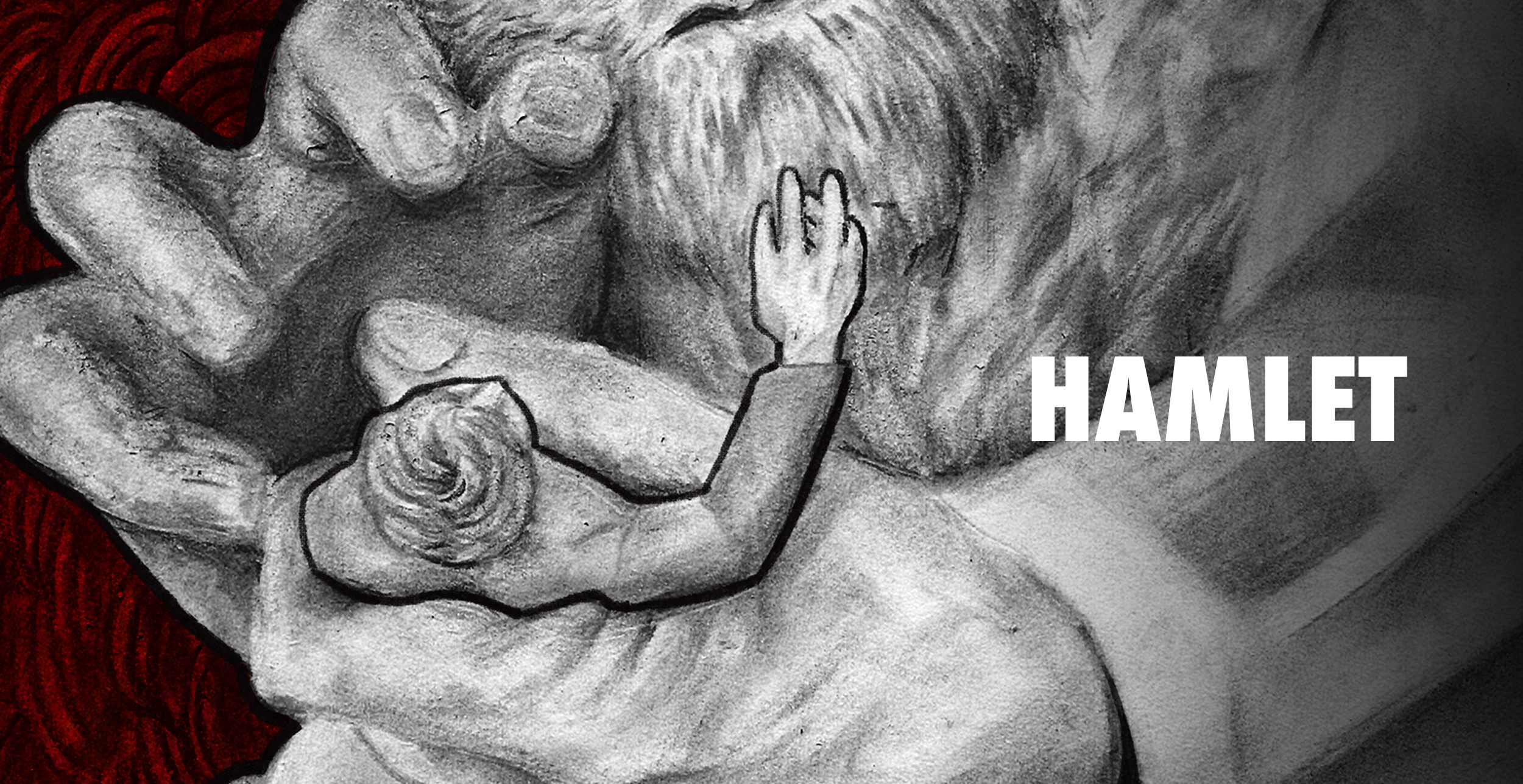
Enter, HAMLET Stage Left…
These are a series of editorial illustrations made for William Shakespeare’s play, Hamlet. They are a mixture of graphite, charcoal, and digital colour. A tale of revenge, we follow Prince Hamlet as he tries to avenge his murdered father, taking back the throne stolen so bloodily by his uncle Claudius.
With his father dead and his mother remarried to the murderer- Hamlet is understandably torn up about having the worst step-father ever. Over the course of the play, we watch as Hamlet slips further and further into grief and madness, leaving a trail of death behind him as he struggles to fulfill his father’s ghostly wish for vengeance.
I’ve always had a soft spot for Hamlet- at his core, he’s a sad university student, ex-theatre kid thrown into far more family drama than anyone should have to take. I’m still waiting for a spin-off where Hamlet, Horatio and Ophelia go back to Wittenberg to complete their degrees, and live happy fulfilling lives. Chop, chop Billy Shakes!
AT A GLANCE

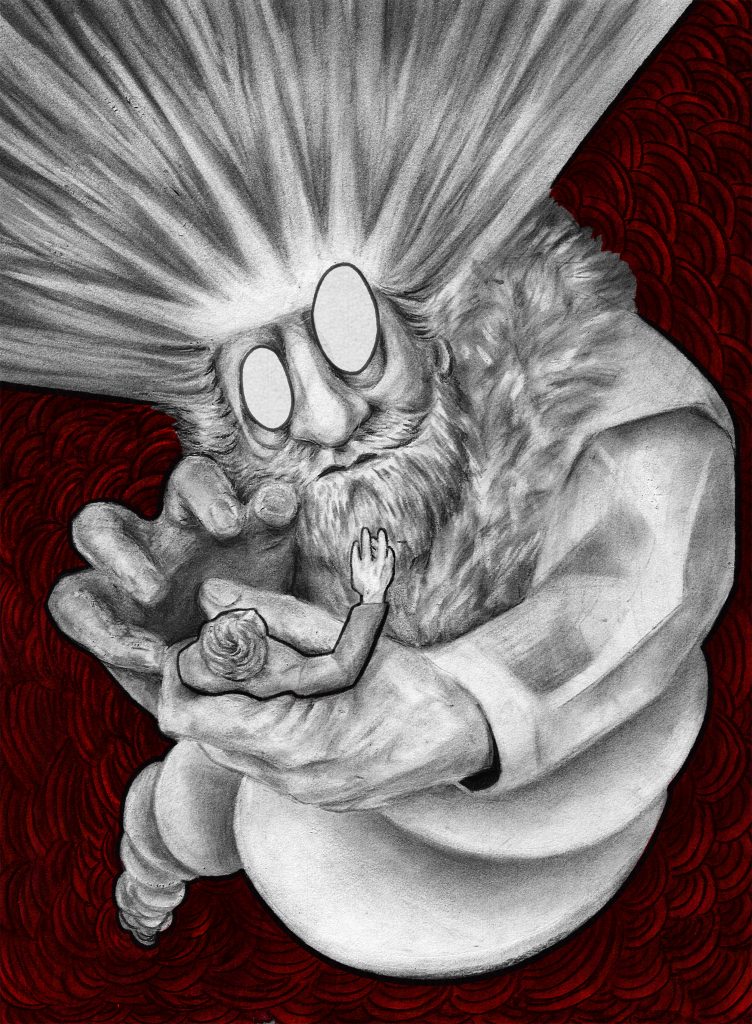
Ghost of Hamlet’s Father – Charcoal and Digital Colour 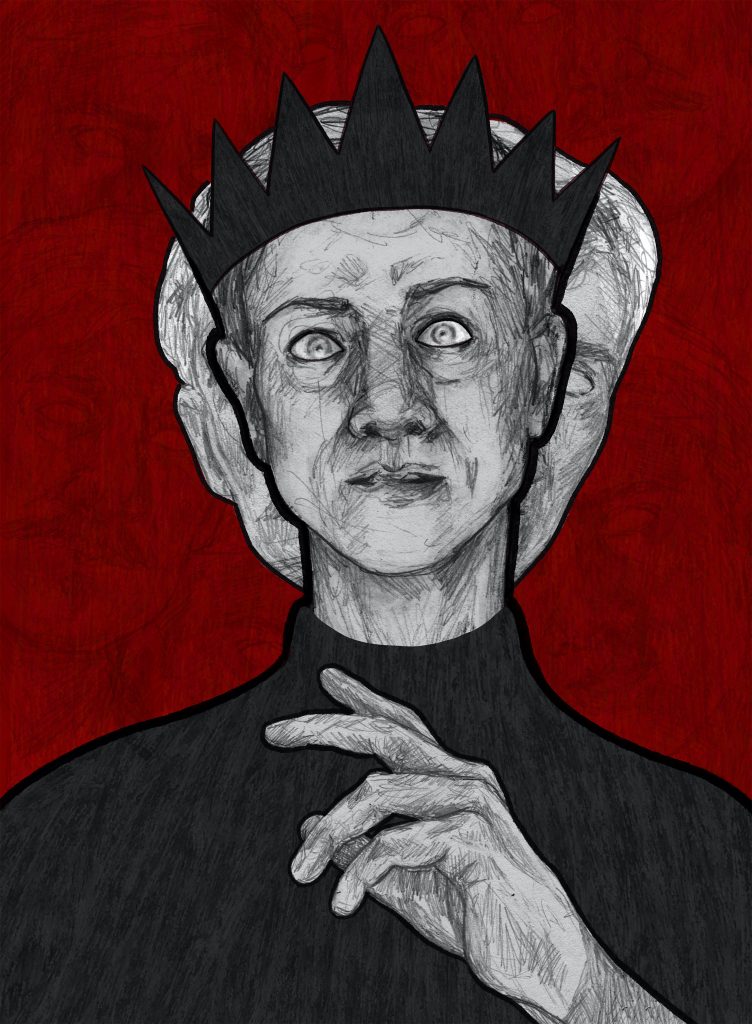
Hamlet – Graphite and Digital Colour
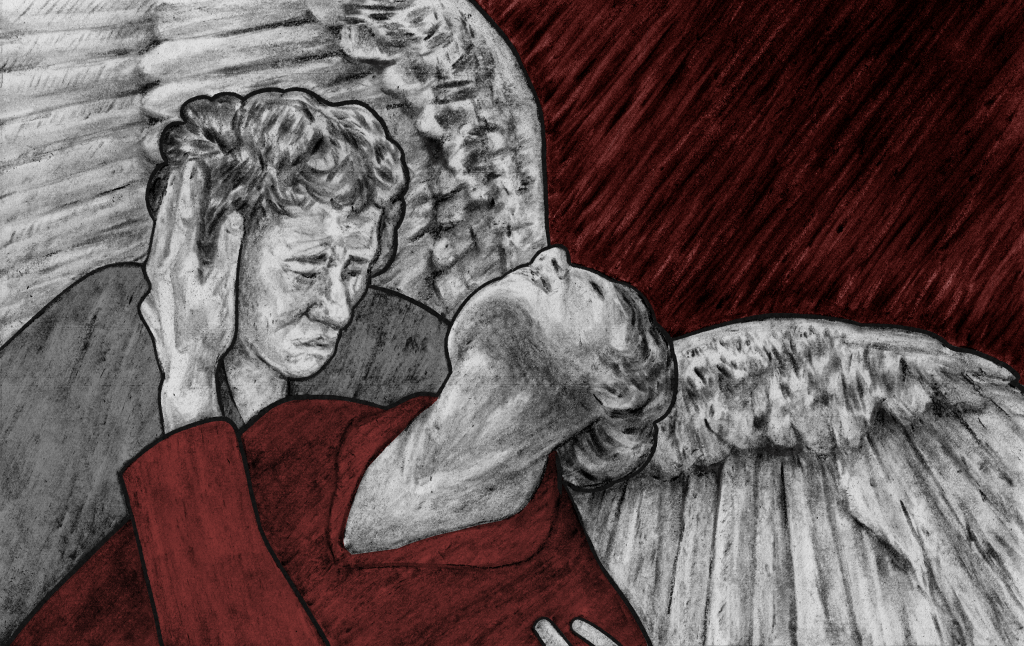
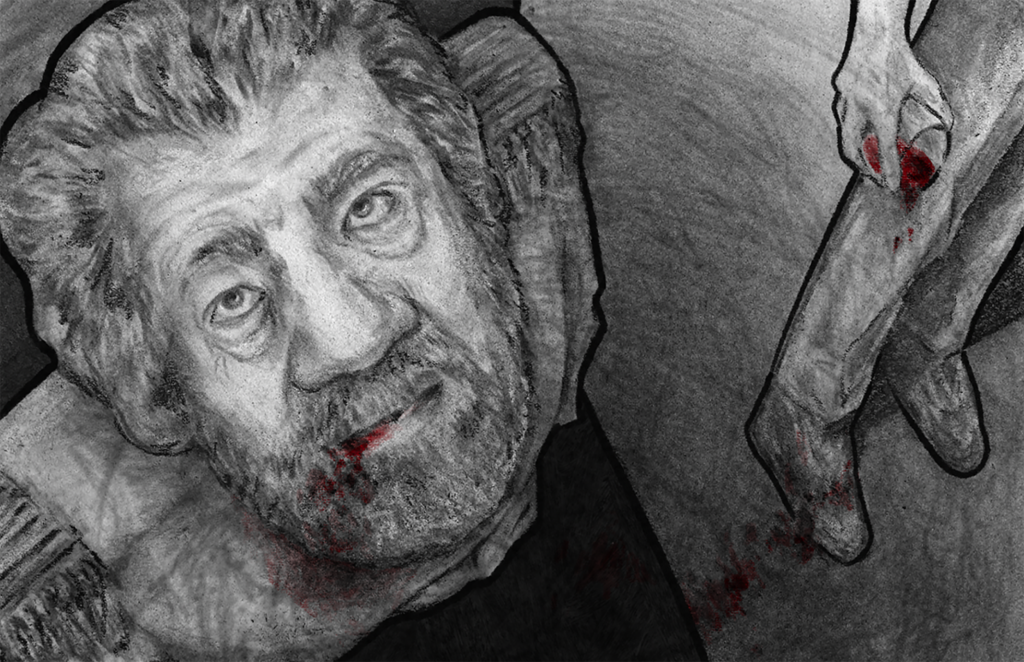

A CLOSER LOOK
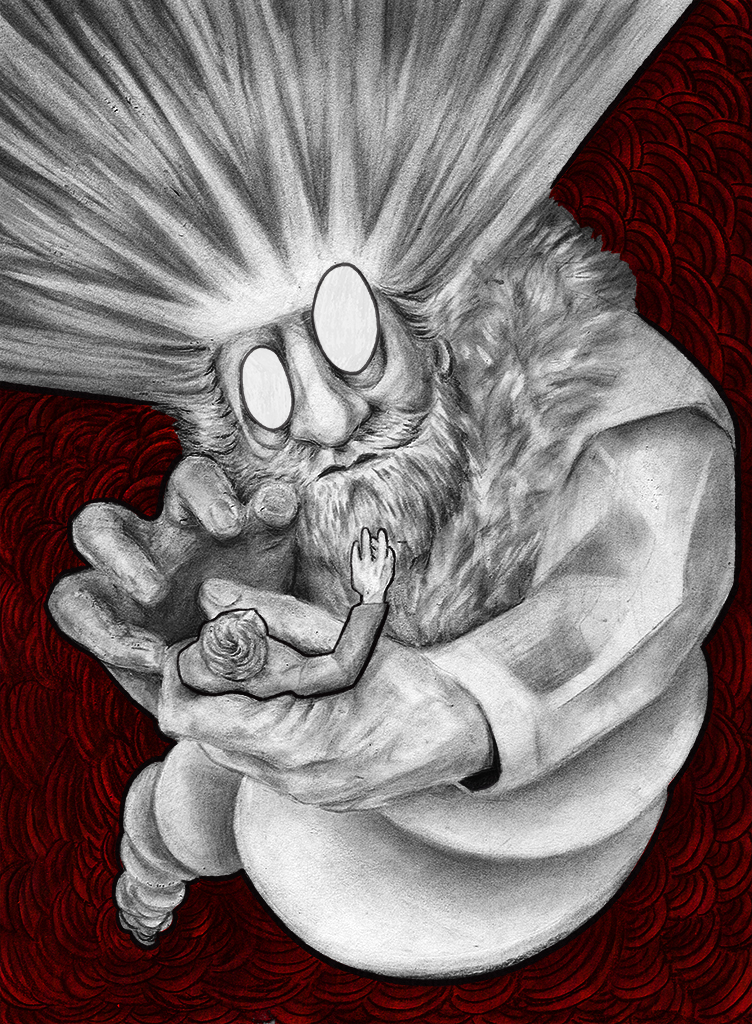
Ghost of Hamlet’s Father
Charcoal and Digital Colour
This illustration was me taking a hard stance on the discussion around Hamlet’s father- was he a benevolent spirit? Or evil? (The answer is evil. I think he was evil.) I depict Hamlet here as small and powerless to both the physical and emotional power of seeing his father’s ghost. He is manipulated by him, held in his clutches and given no choice in accepting his father’s revenge quest. Hamlet’s life is shaped by his loyalty and sense of duty to his father- and this is exactly what leads Hamlet, Polonius, Ophelia, Laertes, Gertrude, Claudius, and almost Horatio to their deaths.
Was it worth it King Hamlet?
Can you rest in peace now?
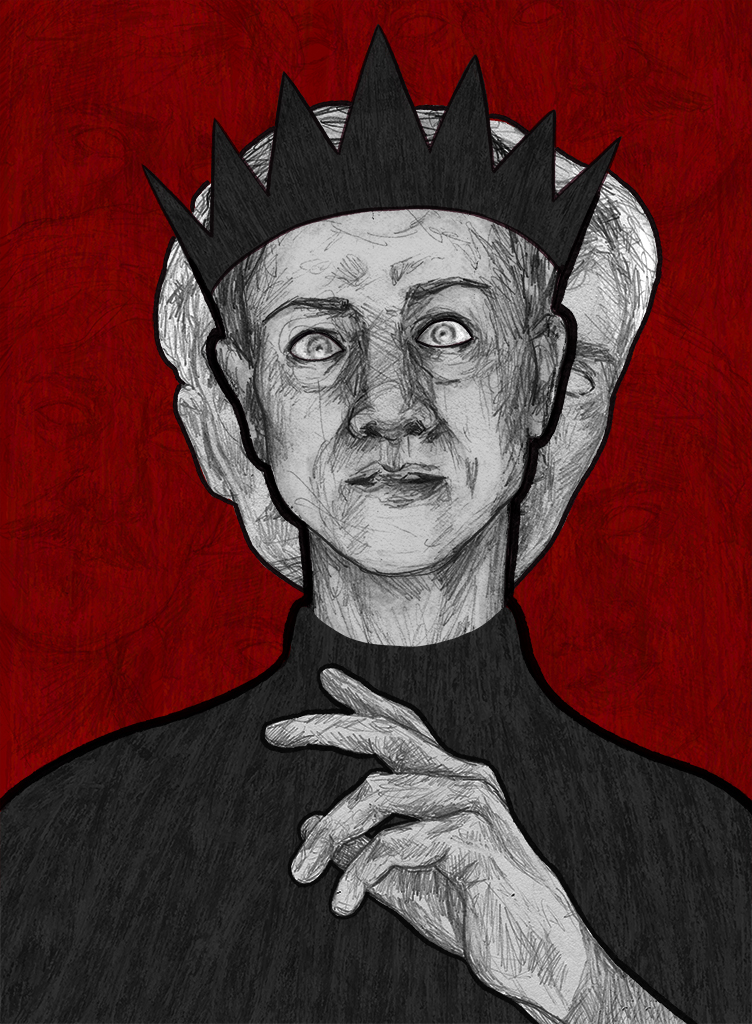
Hamlet
Graphite and Digital Colour
Since the early 1600s, the Danish Prince has seen many eras, temperaments and treatments. Hamlet has been young, old, wilting, brash- and on one memorable occasion, a singing lion.
I avoided picking one depiction of Hamlet for this project- in this portrait I’ve included three versions of the character (as portrayed by Maxine Peake, David Tennant and Kenneth Branagh). The layered faces do double duty- both to show the multiple takes on the character, and to show Hamlet himself looking and judging his actions, introspective to a fault.
I’ve seen actors say that you ‘only get one chance’ to perform Hamlet- there’s a lot of pressure on the role. The multiple faces here speak to that anxiety too- every actor that takes the role has many, many famous performances to live up to.

Good Night, Sweet Prince
Charcoal and Digital Colour
As Hamlet lay dying in Horatio’s arms, he thought death would hold nothing but ‘silence’ for him. After all the killing, with blood still cooling on his fingers- he sees the end of all this pain and murder only leading him straight to hell.
Horatio- who’s followed Hamlet here from university, stayed by his side through it all, seen the death, held the poison, smelt the blood- Horatio can’t think of a single way that Hamlet wouldn’t be going to heaven. To him, ‘flights of angels’ sing Hamlet to his final rest.
Pouring out of Hamlet’s head in my illustration is the nothingness he expects, but the space around his thoughts carves the wings that Horatio sees befitting the prince.

Death of Claudius
Charcoal and Digital Colour
I’ve shown Claudius in his dying moments- stabbed and choking on his own poisoned wine- looking up to the sky and Heaven’s light, still asking if there’s a spot open to him despite it all. (There’s not.)
This should be Hamlet’s crowning moment- the moment he finally kills Claudius and gets his hard-won revenge, but the victory feels like a loss. Hamlet is also dying, poisoned and not long for this world. He won’t live to see the crown of Denmark returned to honest hands. I’ve framed Hamlet in a way where focus is on his murderous act (trailing from the wine glass to Claudius’ mouth), and not on his own reaction.
Hamlet is not acting on his own desires here- he’s but an extension of his late father’s hand.


Ophelia’s Flowers
Graphite and Digital Colour
In Act 4 Scene 5, Ophelia (grief-stricken after the murder of her father) hands either imagined or real flowers out to the King, Queen, and her brother. Each flower’s meaning acts as a comment about the person receiving the gift- some are jabs at adultery, some are jabs at honour.
IN USE
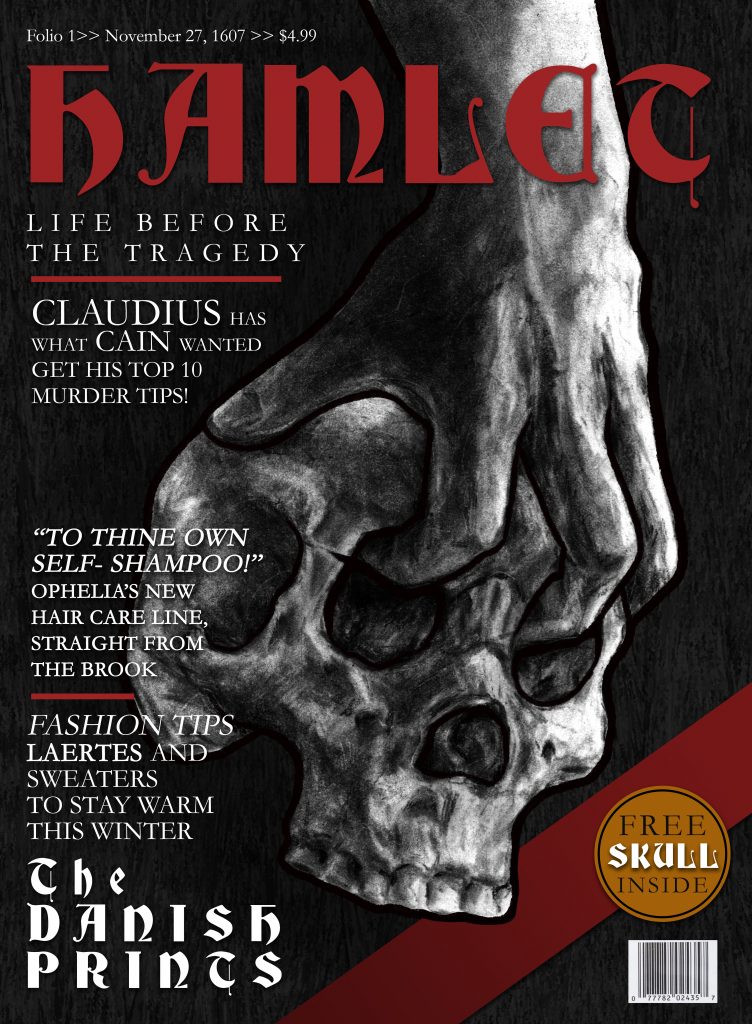
The Danish Prints
The best part of fake-hiring yourself to make editorial illustrations is getting to put them all together with as many jokes as you can cram in!
This Hamlet focused edition of The Danish Prints includes:
- All the best gossip from Elsinore, straight from palace insider OSRIC.
- Interpretations of Ophelia’s flowers- what did they REALLY mean?
- A SHOCKING exposé of Hamlet’s father figures!
- Exclusive deal and first look at Ophelia’s “To Thine Own Self- Shampoo!” hair care line!
- A glimpse into the pressure of being- and playing- a famous prince.
- Laertes famous fashion tips- layering to stay warm this winter!
- A special look into Fortinbras’ new lingerie line- a spread of, unsurprisingly, fourteen bras.
- Claudius’ top 10 murder tips- poison is IN!
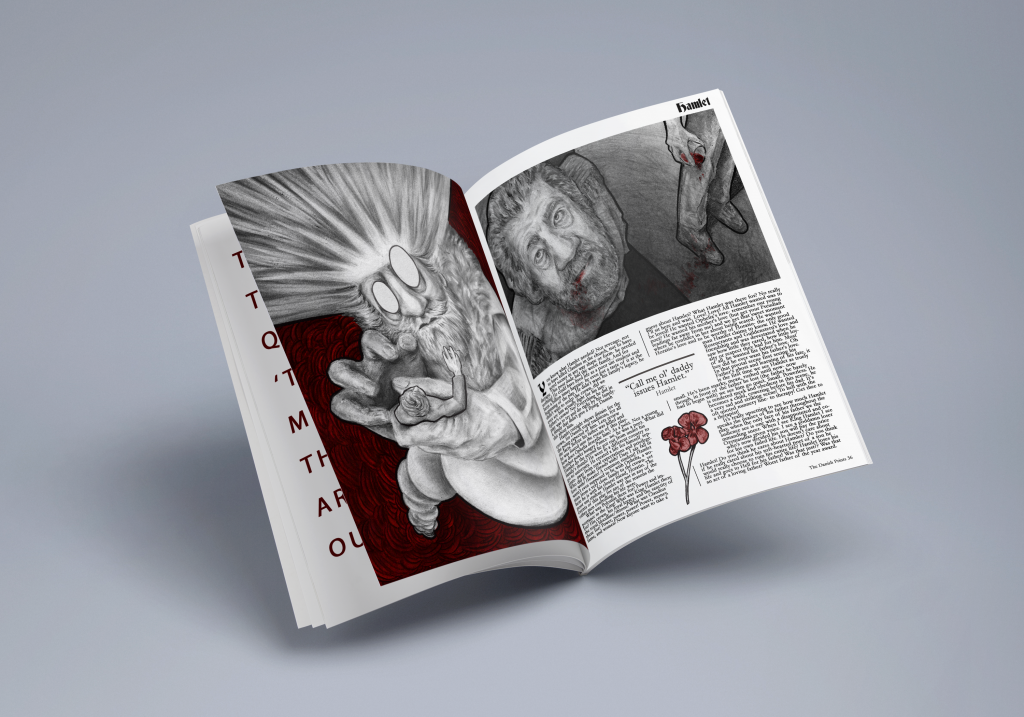
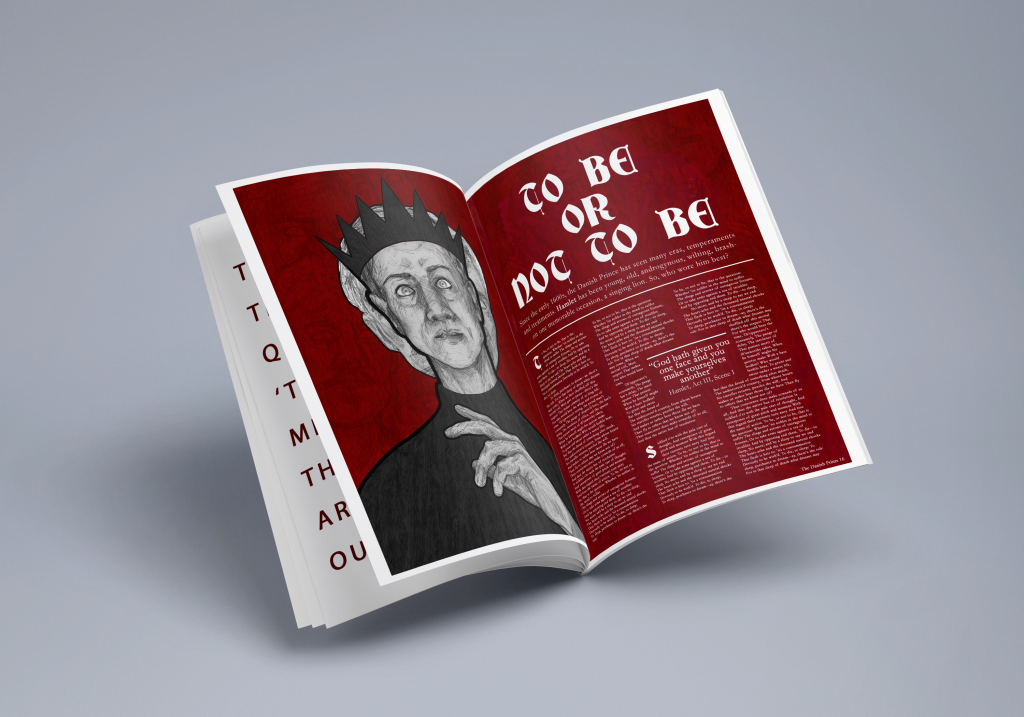
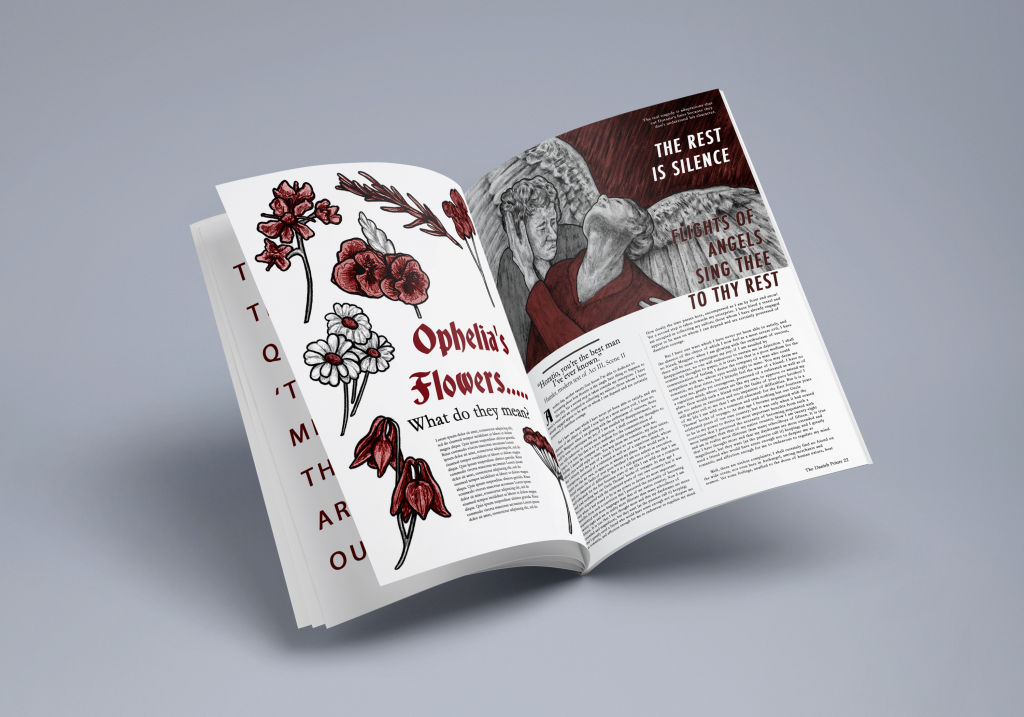
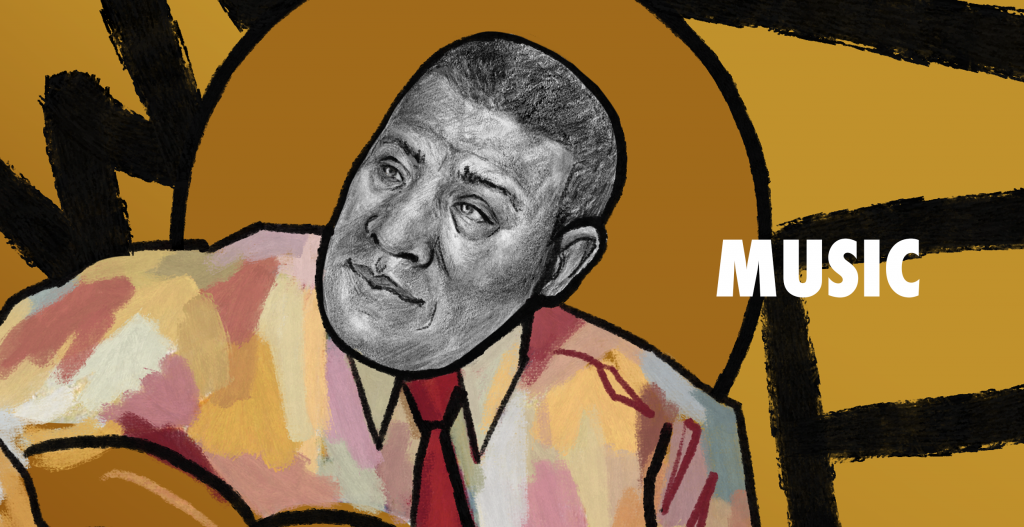
Let’s Dance!
Featured here are some of the voices who’ve kept me company during the long nights of work this year. These illustrations were made with various purposes in mind- posters, CD covers, spot illustrations, and some just for fun!
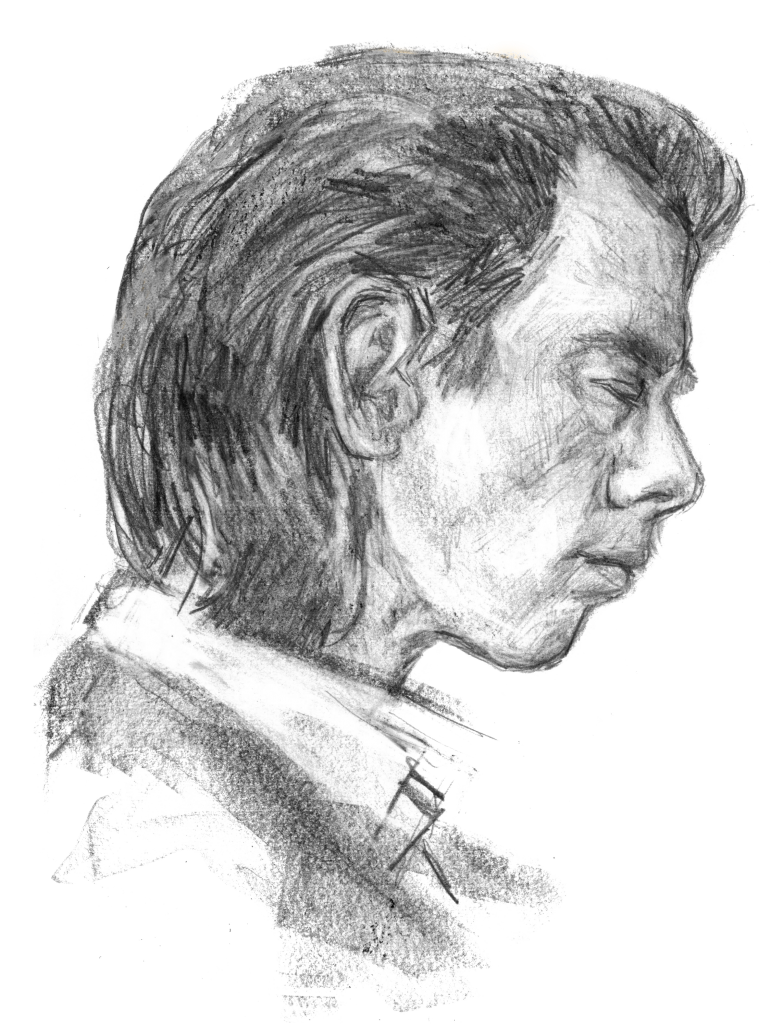
Mixtape:
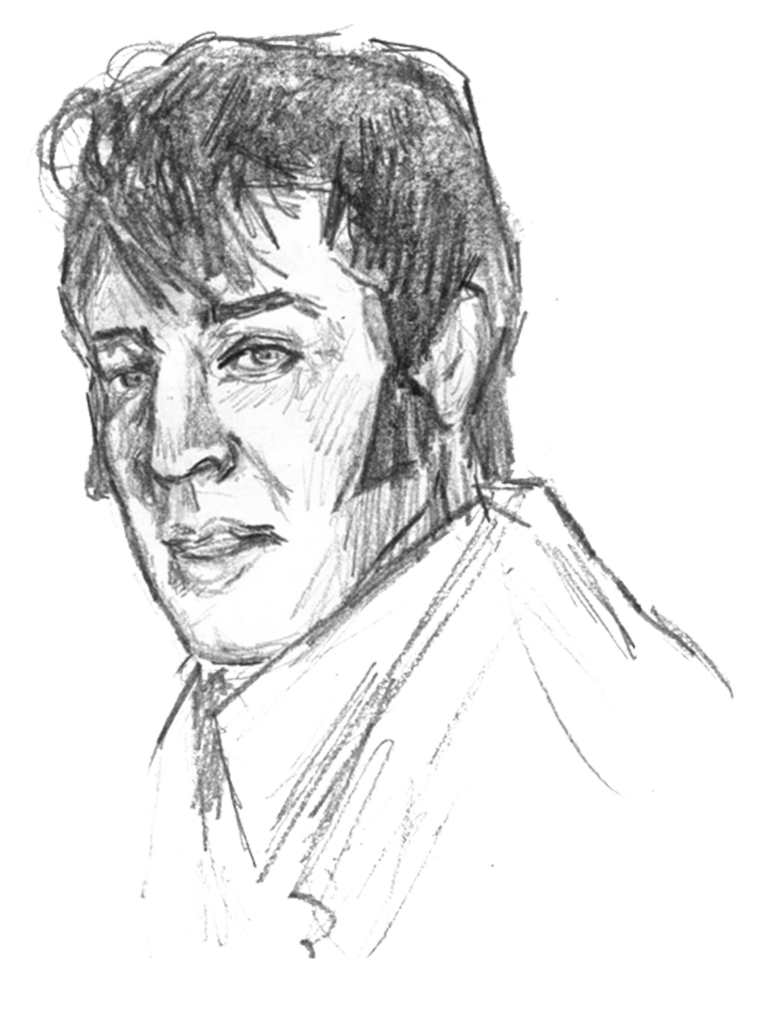
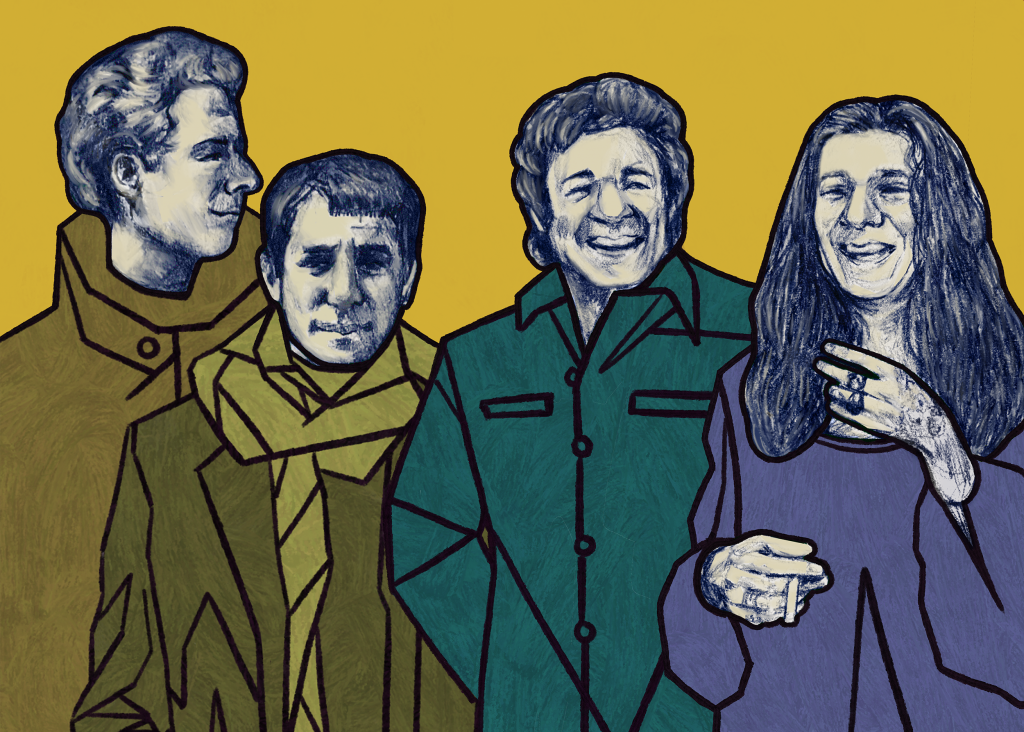
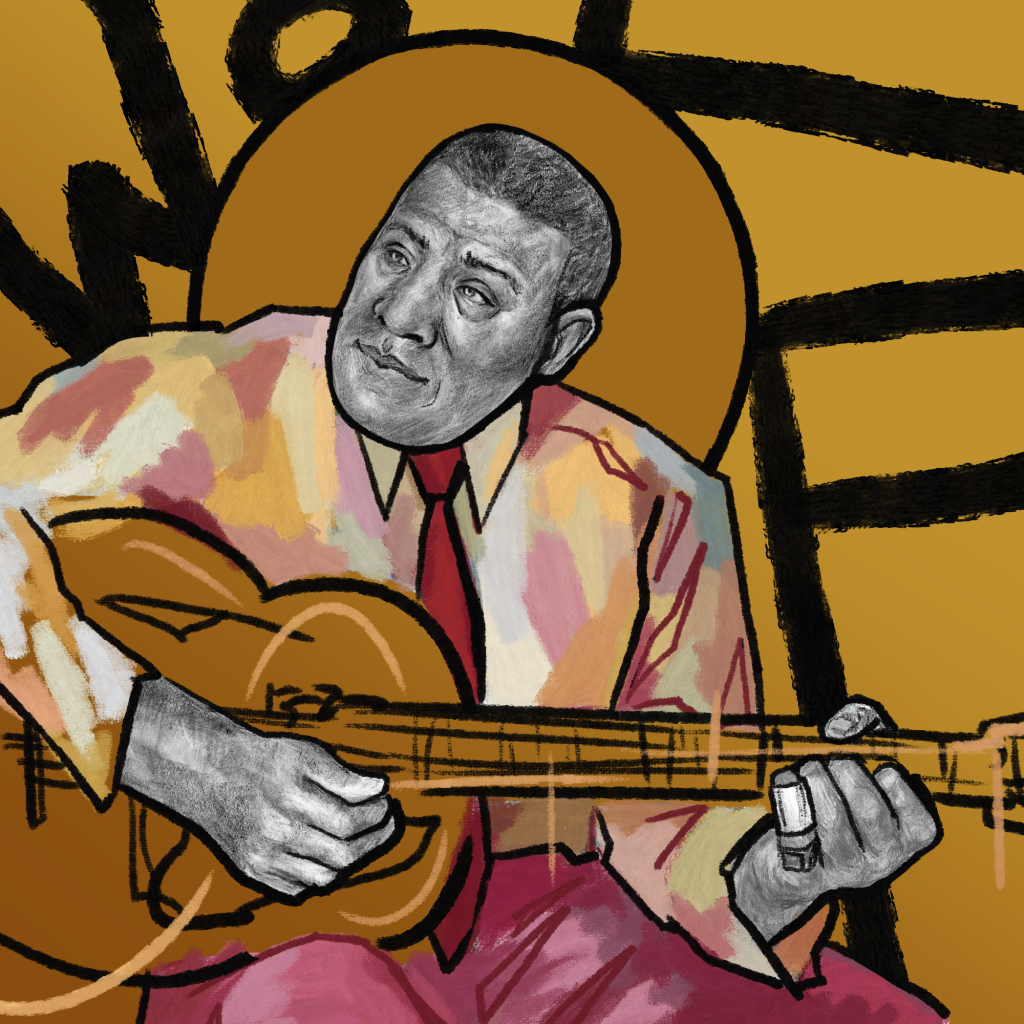
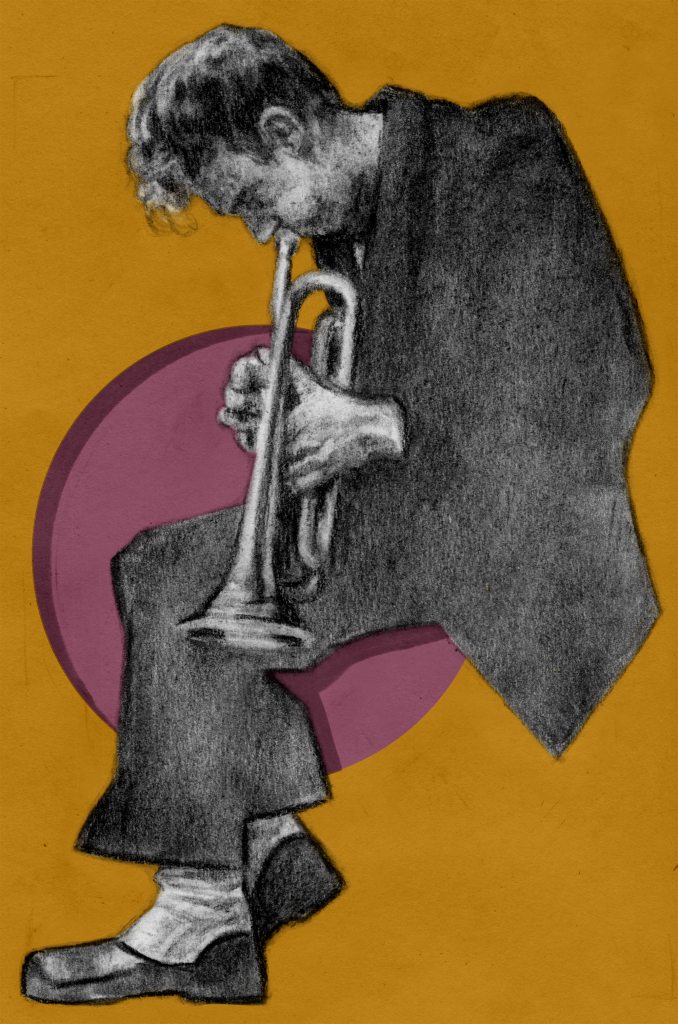
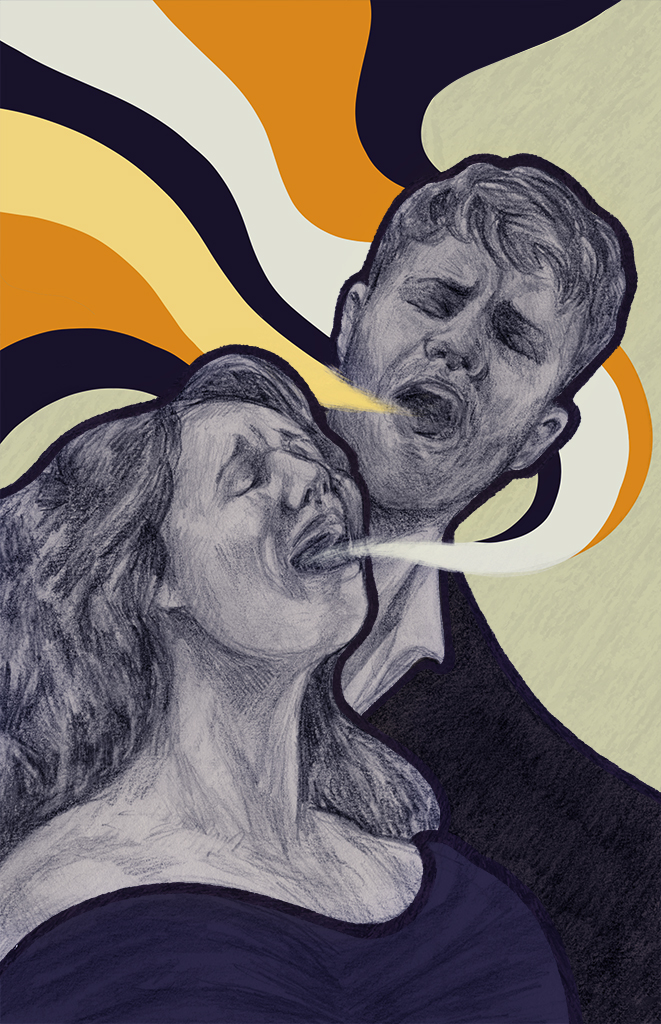
IN USE
